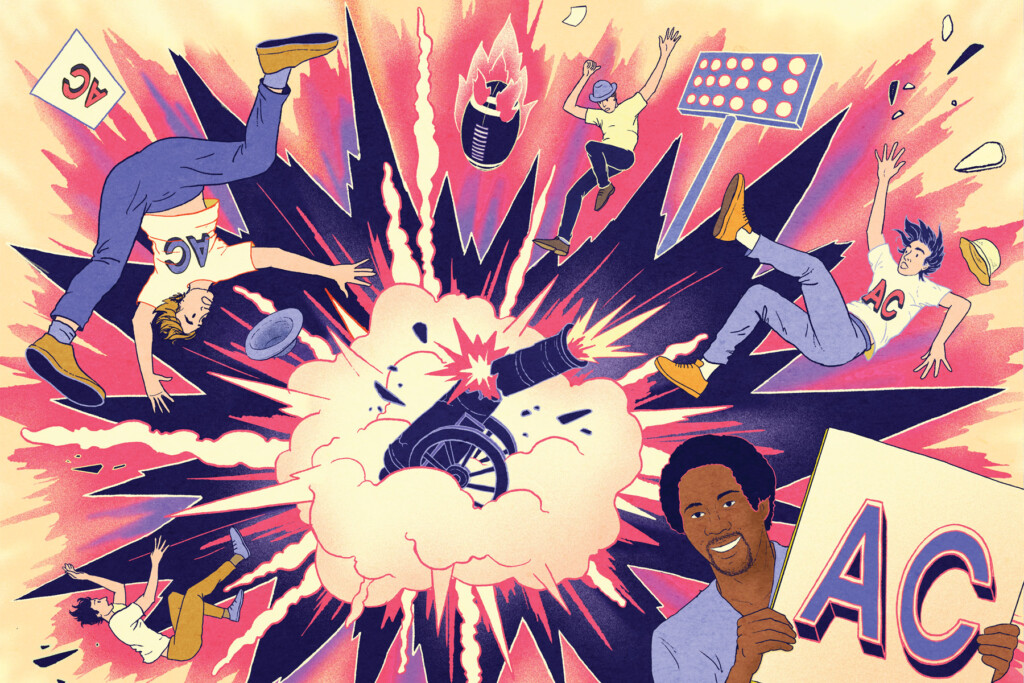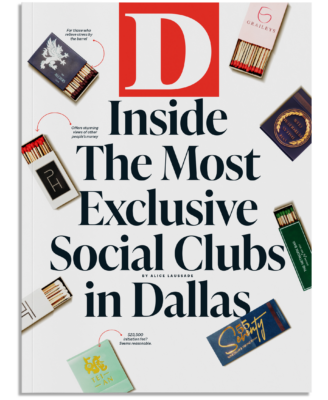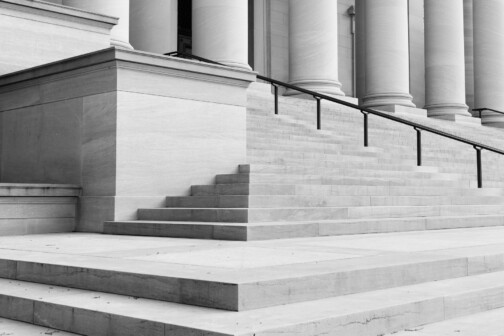Will Rogers said, “You never get a second chance to make a first impression.” That was certainly the case for me and every other freshman when we stepped onto the Austin College campus in the fall of 1973. As we were herded from orientation to the brand-new Ida Green Communication Center and then to Slater’s for lunch, it seemed we were all trying our best to make a good impression and, more than that, hoping we wouldn’t do anything foolish. It was in the midst of all this that I found myself and three other random freshman boys sitting together at lunch.
From that first day, the four of us were inseparable. I ate every meal with Don, Mark, and Greg. When we weren’t in class, we hung out in each other’s dorm rooms, went to parties together, and played pickup basketball. To most of the campus, we were just a nameless clump of freshman boys. But one especially friendly sophomore, a cheerleader, always stopped by our table at Slater’s to talk to us. He invited us to various campus events and fraternity parties.
Two weeks into the semester, he approached us at lunch one day with an interesting question: “You guys know anything about explosives?”
The next thing we knew, we were in a storage closet in the Hughey Gym. After digging through old shoulder pads, megaphones, and musty athletic gear, we came upon an old cannon mounted on yellow-wood spoked wheels with “The Hopper” painted on its side. We would later learn that it used to be fired at AC football games.
As for the four of us, our collective knowledge of explosives was limited to Fourth of July firecrackers. None of us even owned a gun. But what self-respecting teenage boy could resist the prospect of firing a cannon?
We loaded it into the trunk of a car and took it to a gun shop. The owner inspected the cannon and told us, “I don’t see any cracks in the barrel. It looks sound. You just need to pour a capful of gunpowder down the barrel, stuff some tissue down with a plunger, and light the fuse.” He sold us a can of gunpowder, a plunger, and some fuses. He shook his head and added, “Be careful.”
We immediately took the cannon to the football stadium to test it. We prepped the cannon exactly as we were told and lit the fuse. The blast was deafening as flames flew out of the end of the barrel. We were pretty sure someone would come to investigate, so we loaded it up as quickly as possible and took it back to the storage room. We didn’t tell a soul.
“You guys know anything about explosives?”
After lunch that Saturday, we got the cannon out of storage again and wheeled it over to the stadium. Both teams were in the middle of their pregame warmup as we secured it at the base of a flagpole near the back of the end zone. People entering the stadium had to walk right past us to the bleachers. It was obvious that we had their attention, maybe because we were wearing goofy hats and bright yellow t-shirts with large red letters on the front that said “AC REDS.” On the backs of our shirts was printed: “IT TAKES IRON BALLS TO SHOOT CANNONS.”
The start of the game was pretty uneventful, with no scoring by either team. But we were anxious to fire the cannon, so we agreed that we would do so at the end of the first quarter. We watched the clock tick down to zero and then lit the fuse. The roar from the cannon was so loud that it caught the attention of everyone in the stadium, including the players on both teams. We madly danced around, congratulating one another.
By the time we finally gained our composure and looked up, the teams had switched ends of the field. Standing with his back to us on the 10-yard line was fellow freshman Willie Williams, a sensational player who would go on to become one of AC’s greatest. Southwestern at Memphis, now known as Rhodes College, lined up at midfield, facing us. They were preparing to punt the ball to Willie, who at that point in time was the leading punt returner in the nation.
Mark was the first to recognize the opportunity. “What if Willie runs this punt back for a touchdown?” he asked.
It was a reasonable question for sure, and we weren’t prepared to fire the cannon if Willie scored. Mark straddled the barrel, lifting the muzzle so we could reload. Greg, standing directly in front of the cannon, carefully poured the gunpowder from the can into the cap. Don stood to one side with matches, and I stood on the other with the plunger.
Don, Greg, and I were staring straight down the barrel as Greg started to pour in the gunpowder. Don stopped Greg: “Aren’t we supposed to let the barrel cool down before we reload it?” Pausing to process Don’s question, we looked at one another, hoping someone might know the answer.
Now, I’ve never been shy about sharing my opinion, so I blurted out the first thing that came to mind: “In those pirate movies, they just reload the cannons right after they fire them without any problems.” Call it the power of persuasion or just the apex of freshman stupidity, but we all agreed that we needed to get that cannon ready right away. Greg poured the cap of gunpowder down the hot iron barrel.
You don’t have to be an expert in pyrotechnics to guess what happened next. Yes, there was an explosion, and a stream of flames flew out of the end of the barrel. But it didn’t end there. Greg was still holding the full can of gunpowder, and it exploded, too. The blast blew Greg, Don, and me all the way into the end zone. At the same time, Southwestern punted. Coach Larry Kramer had to be thinking, “Why did they fire that damn cannon in the middle of a play?”
I came to my senses pretty quickly, realized my shirt was on fire, and rolled around for a few seconds. Obviously, Greg was absent that day in the second grade when they showed the “stop, drop, and roll” film, because he jumped up and started running madly around the end zone. Don and I tried to catch him.
Willie fielded the punt and headed upfield. The Southwestern punt coverage team, sprinting toward us, came to an abrupt stop. They couldn’t decide whether they should tackle Willie or watch the three guys on fire running around the end zone. We finally wrestled Greg to the ground, rolled him over a few times, and then jumped to our feet. The crowd was going crazy. They thought the cannon crew had pulled off the greatest prank in AC history. The PA announcer screamed, “TOUCHDOWN ROOOOOOOS!”
One person who knew it wasn’t a joke was our cheerleading friend, who sprinted toward the end zone. By the time he reached us, the crowd and the football team realized something might be wrong. The EMTs and AC athletic trainers arrived quickly, and Greg and Don were loaded into an ambulance and whisked away. As the ambulance drove off, I turned to one of the trainers and said, “Wow, those guys looked terrible. Their hair and eyebrows were burned off, and their arms were charred black.” He replied, “And you look just like them.” I guess I was still in shock, but as soon as I looked down at my charred arms and reached up and touched my head, I realized I’d better go to the hospital, too. Mark and I jumped in his pickup and headed after the others.
We were fortunate. Though extremely painful, our injuries were no more serious than second- and third-degree burns, which would heal over time without scarring. Our hair would grow back as well. We headed back to school with our hands, arms, and foreheads covered in white gauze, like Wile E. Coyote after a failed attempt to catch the Road Runner. After a stop at Wynne Chapel to give thanks, we headed over to Slater’s. It was supper time, and since steaks were served on Saturday nights, everyone would be there.
We were afraid that we would be the laughingstock of the campus when we walked in the door of the cafeteria, but instead we got the surprise of our lives—a standing ovation! We were heroes because AC had managed a 14-14 tie, partly as a result of our incompetence. We stopped and raised our bandaged arms as high as we could in appreciation. Fellow students cheered us, football players thanked us, and sorority girls offered to help us eat. Being helpless wasn’t going to be so bad after all.
Our injuries only lasted a short while, but for the AC Reds, the friendships forged after the cannon incident have lasted a lifetime. The four of us remained close that year, even pledging the same fraternity. We all graduated from AC in 1977. Mark Freeman is now a computer programmer. Greg Packwood, a four-year letterman on the AC swim team, is now a successful business owner. Don Adams decided playing in AC football games was less dangerous than watching them, and he became an all-conference linebacker. He attended law school at SMU and now is an executive with Exxon. I also swam at AC and have been an educator these past 40 years, hopefully helping kids to learn from my mistakes rather than make them.
Oh, and that cheerleader who talked us in to this? He went to the University of Texas School of Law, became the mayor of Dallas, and eventually served on President Obama’s cabinet.
Ron Kirk.
This story originally appeared in the September issue of D Magazine with the headline, “Adventures in Artillery.” Write to [email protected].







